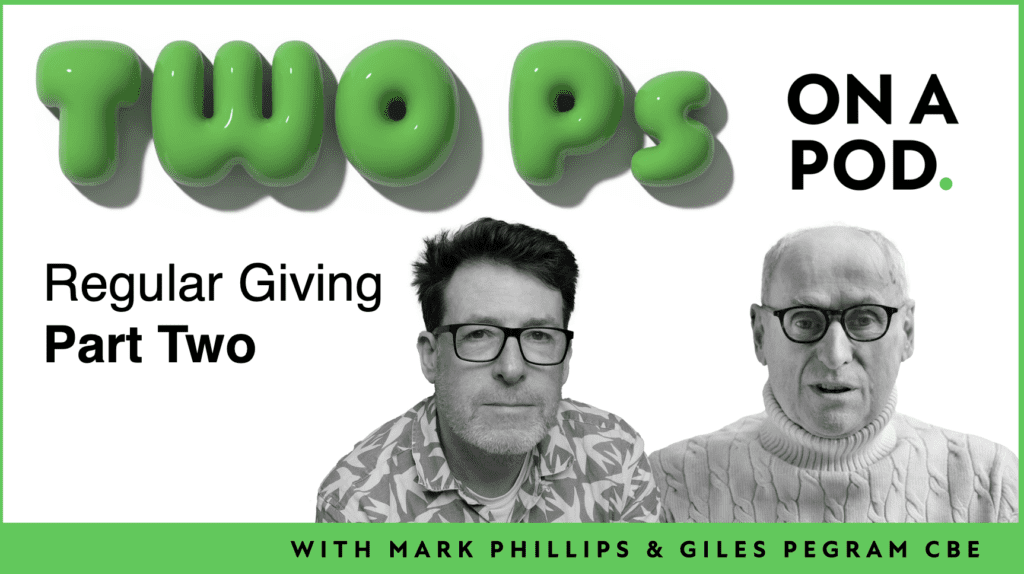How do donors choose which charities they support?
I spent an interesting day at the CGAP conference in London on Friday.
The highlight was Beth Breeze's presentation on how donors choose charities. I wrote about her initial findings back in February and now I've had an opportunity to read her final paper I'm pleased to see that it confirms many of the findings that I've seen reported in the (normally unpublished) research undertaken by large charities.
It takes as its starting point the widespread belief that charities exist primarily to help those in need and the desire to meet those needs is the key criterion donors use in selecting which charities they support.
Beth's study shows that this is a rather dangerous perspective for fundraisers to take.
She found that people do not give to the most urgent need, but prefer to support work that is personally relevant. And when channeling their donations to their preferred cause, they have a rather inconsistent approach to choosing charities.
Many of the people in Beth's study stumbled upon the organisations they decided to support. As one donor summed up when describing his own philanthropic strategy...
"Why did I choose these particular ones? Well, that has been a bit haphazard to be quite honest with you. I mean, I've sort of come across them as I've gone along."
And when they do come across them, donors have their own (highly personal) strategies to help them decide how they respond to a request for help. Some donors seem to divide charities into 'types' that automatically classifies them as worthy of support or not – religious vs non-religious, animal vs people focus or overseas vs home based charities.
Others might have unwritten rules that charities have to adhere to if they are going to receive support.
And though an assessment of charity competence is an important factor in the decision making process, there is little evidence that people base their judgments on objective criteria. For example, Beth found that it wasn't unusual for donors to judge a charity based on its approach to direct mail...
"If they send too many I feel they're just wasting the money, not spending it properly and so we cut them out",
"I have a foolproof system of avoiding any charities that I don't approve of, which is that if they get my address wrong they don't get a gift."
But, most interestingly, what comes to the surface time and time again in her report is the importance of personal taste and background in selecting charitable beneficiaries. This "taste-based giving", as opposed to "needs-based giving" is illustrated by many of the direct quotes she includes...
"I donate to the RSPB because bird-watching is one of my great
obsessions, It's my, kind of, my treat to myself, if you like.""It's really what in one's own mind is a deserving cause, and it does range, you know, hugely widely and totally irrationally. I mean, I would support deserving dogs but I wouldn't support cats (laughs) because I just happen not to like cats. It's as silly and as simple as that."
But it is Beth's findings on donor focus that offer us the greatest insight. Her research show that donors have a desire to make an impact as an individual that is not 'drowned out' by support from other donors or the government.
I know from my own experience that the desire to see the difference that "I" have made is perhaps the most powerful driver for long-term support. The current approach of many charities to repeatedly ask donors time after time for money without ever sharing the direct impact of those gifts simply doesn't work.
Showing donors what they have done rather than reporting on what the broader charity has achieved is the fundamental difference between good fundraising and bad. Beth's report firmly points us in the direction we should be moving in when developing our communications.
The full report can be downloaded here (PDF). It is concise, avoids jargon and is very readable. I would strongly recommend that all fundraisers read it. It speaks a great deal of sense that many charities, in these difficult times, would be well served to heed.
Update: Beth's own blog on the research can be read here.
Tags In
Related Posts
1 Comment
Comments are closed.
The Essentials

Crack the Code to Regular Giving: Insights, Strategies, and a Special Giveaway!

‘Tis Halloween. Keep to the light and beware the Four Fundraisers of the Apocalypse!

Why do people give? The Donor Participation Project with Louis Diez.

A guide to fundraising on the back of a postcard

What does the latest research tell us about the state of fundraising?






Interesting post. It is a smart conclusion based in a lot of common sense that donors want to see what their money is doing in a real, tangible way. We wrote a blog on this same subject and had some different input to add to the subject. Check it out at http://bit.ly/aZZv1S